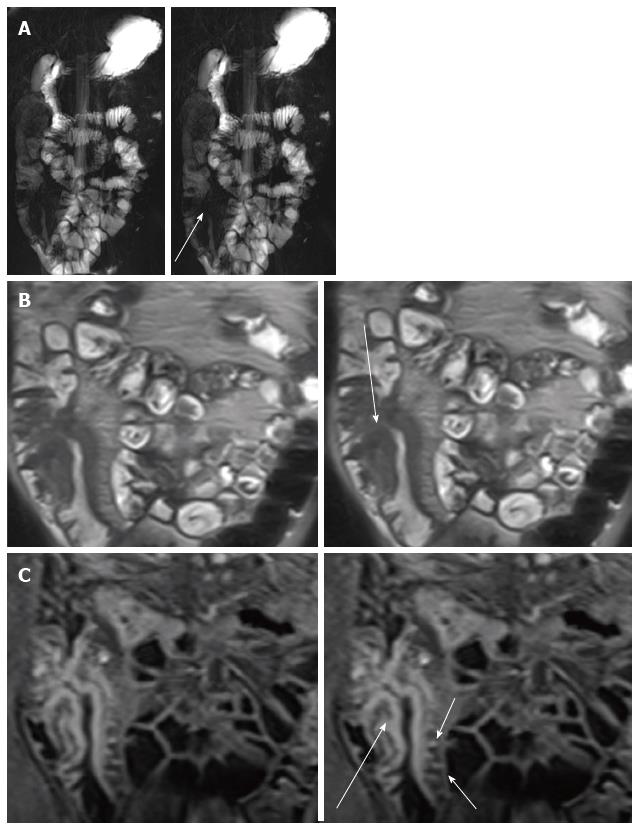Copyright
©The Author(s) 2016.
World J Radiol. Jul 28, 2016; 8(7): 668-682
Published online Jul 28, 2016. doi: 10.4329/wjr.v8.i7.668
Published online Jul 28, 2016. doi: 10.4329/wjr.v8.i7.668
Figure 1 Magnetic resonance enterography in 15-year-old patient with Crohn’s disease.
MR fluoroscopic (∞/950) image A shows luminal narrowing of the terminal ileum (arrow). Coronal half-Fourier RARE (1000/90, 150° flip angle) image; B shows wall thickening of the terminal ileum (arrow). Coronal contrast- enhanced fat-saturated T1-weighted VIBE (4.2/mini-mum, 10° flip angle) image; C shows stratified contrast enhancement with avid enhancement of mucosa relative to submucosal and muscular layers and layered appearance. Note high-signal-intensity linear structure due to increased vascularity close to mesenteric border of the small-bowel segment involved-the so-called comb sign (short arrows). These MR findings are indicative of active Crohn’s disease. MR: Magnetic resonance.
- Citation: Masselli G, Mastroiacovo I, De Marco E, Francione G, Casciani E, Polettini E, Gualdi G. Current tecniques and new perpectives research of magnetic resonance enterography in pediatric Crohn’s disease. World J Radiol 2016; 8(7): 668-682
- URL: https://www.wjgnet.com/1949-8470/full/v8/i7/668.htm
- DOI: https://dx.doi.org/10.4329/wjr.v8.i7.668









